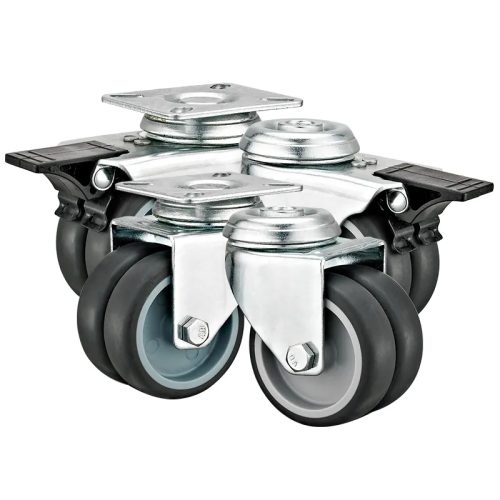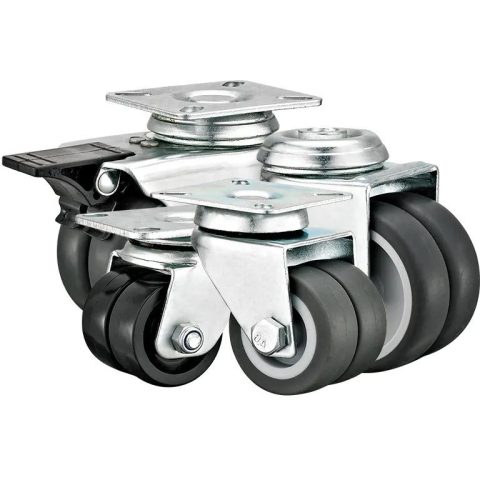Choosing the right twin-wheel casters for your specific application is a crucial decision that can significantly impact the performance and functionality of your equipment or furniture. With a variety of options available, it’s essential to consider various factors to ensure you make an informed choice. In this article, we will guide you through the process of selecting the most suitable twin-wheel casters for your needs.
- Load Capacity
The first consideration when choosing twin-wheel casters is the load capacity. Determine the maximum weight that the casters will need to support. Make sure to choose casters with a load capacity that exceeds the weight of your equipment or furniture to ensure safety and longevity.
- Wheel Material
Selecting the right wheel material is critical. Common materials include rubber, polyurethane, and nylon. Rubber wheels offer good grip and noise reduction, making them suitable for indoor use. Polyurethane wheels are durable and work well on various surfaces. Nylon wheels are lightweight and resistant to chemicals. Consider the type of flooring and environment in which the casters will be used.
- Wheel Diameter
The diameter of the caster wheels affects their ease of rolling and maneuverability. Larger wheels generally roll more smoothly and can overcome obstacles, making them suitable for heavy-duty applications. Smaller wheels are better for precise and controlled movements in tight spaces.
- Swivel vs. Fixed Casters
Determine whether you need swivel casters, fixed casters, or a combination of both. Swivel casters allow for easy maneuverability in any direction, making them ideal for furniture and equipment that require mobility. Fixed casters, on the other hand, provide stability and control in a straight line. Combining swivel and fixed casters is a common choice for applications that require both.
- Braking Mechanisms
Consider whether your application requires casters with built-in brakes. Brake mechanisms can help secure equipment or furniture in place when needed, preventing unintended movement. There are various brake types, including total lock, side lock, and directional lock, each offering different levels of immobilization.
- Mounting Type
Check the compatibility of the caster’s mounting type with your equipment or furniture. Common mounting options include plate mount, stem mount, and bolt-hole mount. Ensure that the mounting style aligns with your specific application and installation requirements.
- Corrosion Resistance
If your application involves exposure to moisture, chemicals, or harsh environments, opt for casters with corrosion-resistant features. Stainless steel or zinc plating can help protect the casters from rust and deterioration.
- Budget Considerations
Finally, consider your budget constraints. While it’s essential to choose high-quality casters that meet your requirements, you can find options that balance performance and cost. Investing in durable casters can lead to long-term savings by reducing maintenance and replacement expenses.
In conclusion, selecting the right twin-wheel casters for your application involves careful consideration of load capacity, wheel material, wheel diameter, swivel vs. fixed options, braking mechanisms, mounting types, corrosion resistance, and your budget. By understanding your specific needs and the available options, you can make an informed decision that enhances the functionality and efficiency of your equipment or furniture.


